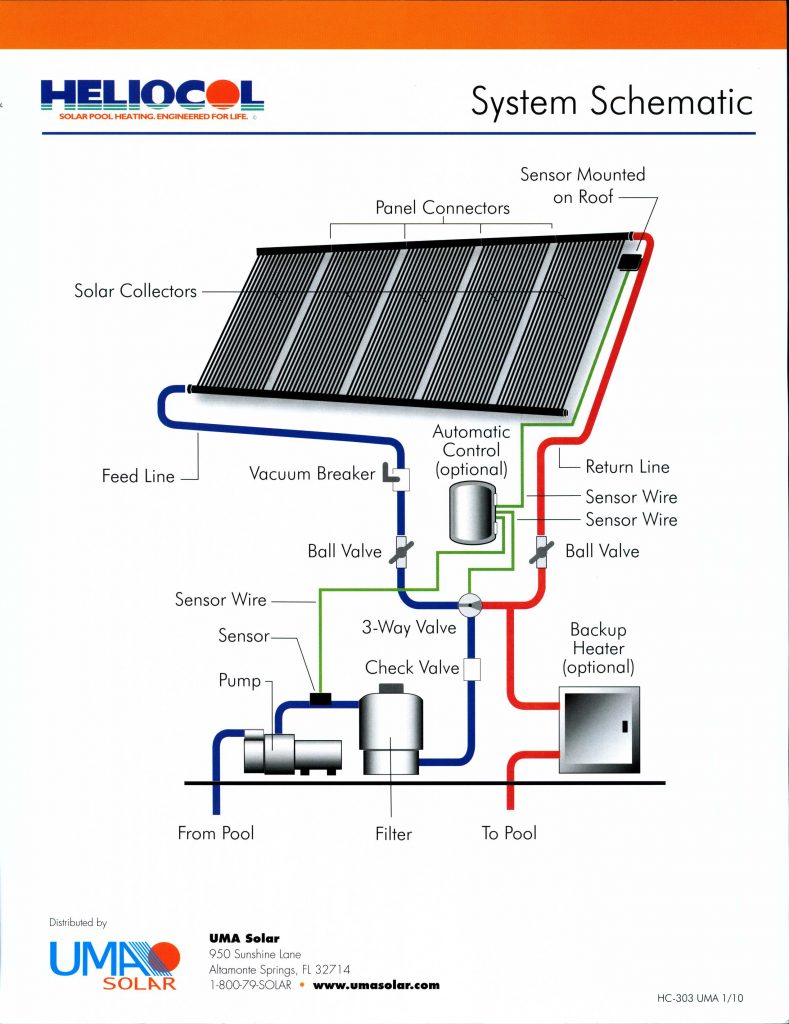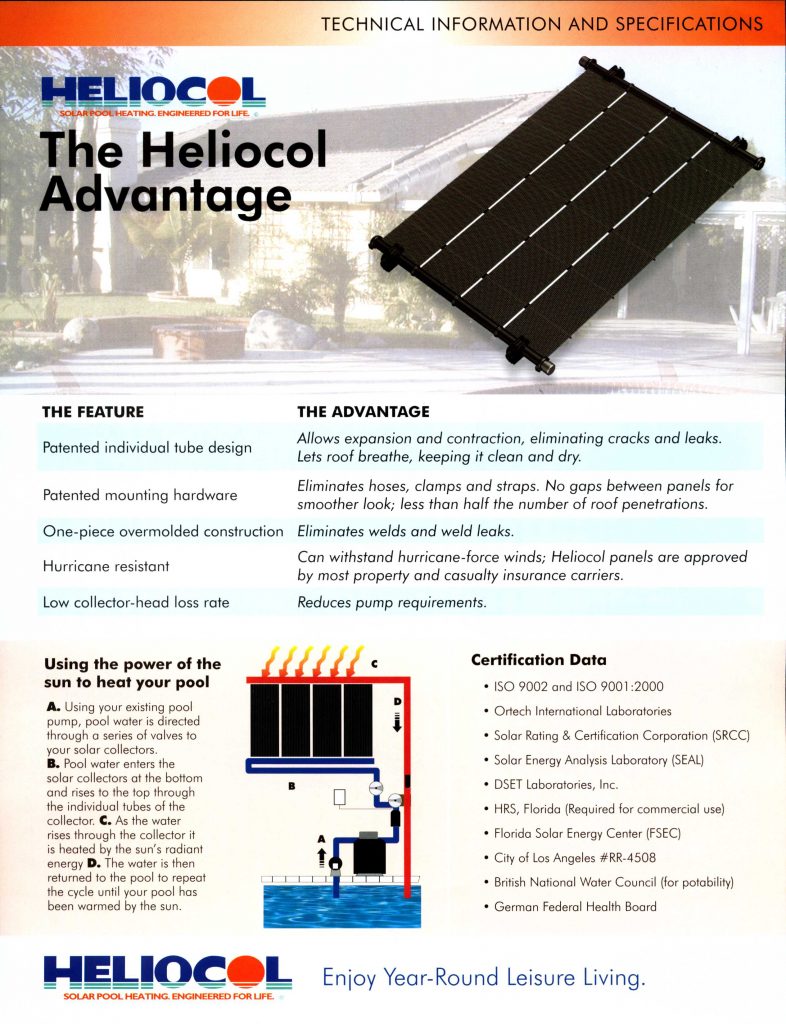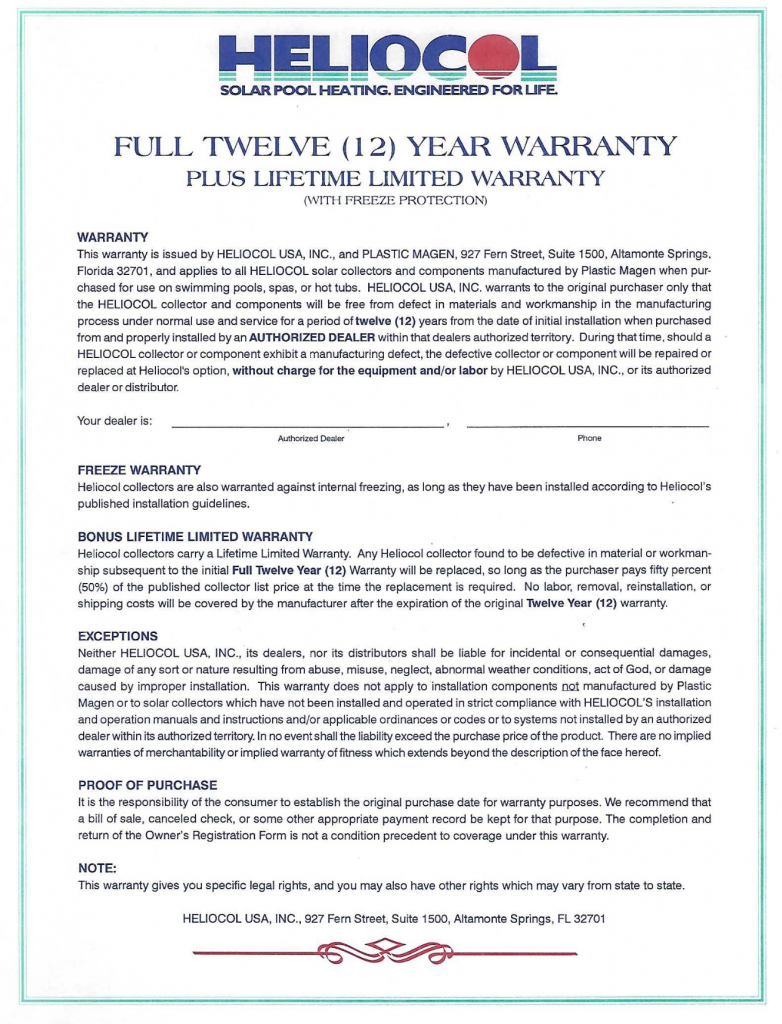

In a solar pool-heating system, the existing pool filtration system pumps pool water through the solar collector, and the collected heat is transferred directly to the pool water. Solar pool-heating collectors operate just slightly warmer than the surrounding air temperature and typically use inexpensive, unglazed, low- temperature collectors made from specially formulated plastic materials. Glazed (glass-covered) solar collectors are not typically used in pool-heating applications, except for indoor pools, hot tubs, or spas in colder climates. In some cases, unglazed copper or copper-aluminum solar collectors are used.
In residential applications where the goal is usually to extend the swimming season into spring and fall, heating a swimming pool with solar energy requires a solar collector that is 50% to 100% of the surface area of the pool. In general, adding more square footage lengthens the swimming season and allows owners to use the pool in colder weather. A pool cover or blanket significantly reduces heat loss in a cost-effective manner and helps maintain warm temperatures for long periods.
A solar pool-heating system costs between $2,000 and $10,000 to buy and install, depending on size. Costs run between $7 – $12 per square foot depending on system design and collection type. This provides a return on investment between 1.5 and 7 years, depending on the cost of the auxiliary energy being displaced.
Maintenance of solar pool-heating systems is minimal. The systems are pre-engineered and can be sized for any pool by simply adding additional solar panels to obtain an adequate solar collector area.
The only moving part on a solar pool-heating system is the diverting valve. This valve controls when the water circulates through the collector loop. If the collector temperature is sufficiently higher than the temperature of the water in the pool, water is diverted from the filter systems through the collector loop. The water bypasses the solar collectors during the night or cloudy periods. Some smaller systems are operated manually or with timers. Larger systems are operated by electronic sensors and controls.



